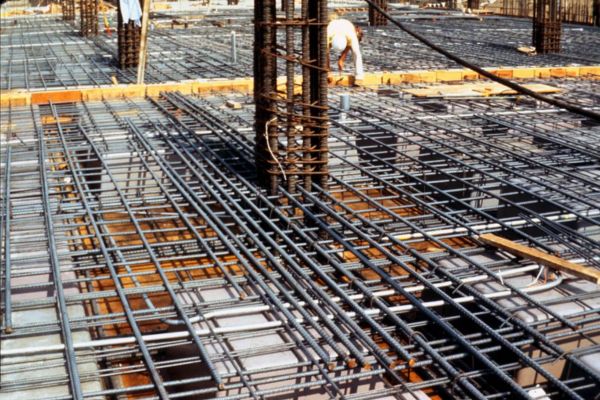
Steel reinforcement, also known as rebar (short for reinforcing bar), plays a crucial role in ensuring the structural integrity and safety of buildings, bridges, roads, and various concrete structures. In this article, we’ll explore the significance of steel reinforcement in construction, its types, and the methods employed for its installation.
The Role of Steel Reinforcement
Steel reinforcement is primarily used to provide tensile strength and support to concrete structures. While concrete is excellent in compression, it is relatively weak when subjected to tension or bending forces. This is where steel reinforcement comes into play. By incorporating steel bars within concrete elements, the resulting composite material benefits from both the compressive strength of concrete and the tensile strength of steel. This synergy ensures that the structure can withstand various loads, resist cracks, and maintain its integrity over time.
Read Also>>> E-Procurement at Tata Steel: Revolutionizing Supply Chain Management
Types of Steel Reinforcement
- Mild Steel Rebar (MSR): This is the most common type of rebar used in construction. It’s made from carbon steel and is ideal for most general applications. MSR bars have a smooth surface, providing good bond properties with concrete.
- High-Strength Steel Rebar (HSR): These bars are made from high-strength steel alloys and are used in situations where greater tensile strength is required, such as in high-rise buildings and bridges. They are usually ribbed for better bonding with concrete.
- Epoxy-Coated Rebar: To prevent corrosion, rebar can be coated with epoxy, which acts as a protective layer. This is particularly useful in structures exposed to harsh environments, like those near the coast where salt can accelerate corrosion.
- Galvanized Rebar: Galvanized rebar is coated with a layer of zinc to protect against rust and corrosion. It’s commonly used in structures that might be exposed to moisture or chemicals.
Methods of Steel Reinforcement Installation
- Traditional Hand Tying: In this method, workers manually tie the rebars together using wire or steel ties. While it’s a straightforward approach, it can be labor-intensive and time-consuming.
- Mechanical Couplers: Mechanical couplers provide a more efficient way to join rebar without the need for manual tying. These devices are threaded onto the ends of rebar, effectively connecting them with a strong mechanical bond.
- Welding: For specific applications, rebar can be welded together. Welding provides a robust connection but requires skilled labor and careful inspection to ensure the integrity of the welds.
Read Also>>> ASME B36.10: Understanding Seamless and Welded Steel Pipe Standards
Importance of Steel Reinforcement Quality
Ensuring the quality of steel reinforcement is paramount in construction. Any defects or substandard materials can compromise the strength and durability of the structure. Quality control measures, including inspection of the steel, verification of dimensions, and adherence to relevant codes and standards, are essential to guarantee structural integrity.
Conclusion
Steel reinforcement is the unsung hero of construction, providing the necessary tensile strength and support that concrete structures need to withstand various loads and environmental conditions. It is an integral part of creating safe, durable, and long-lasting buildings, bridges, and infrastructure. Whether it’s mild steel rebar for a residential foundation or high-strength steel rebar for a towering skyscraper, steel reinforcement is the backbone of structural integrity in the construction industry.